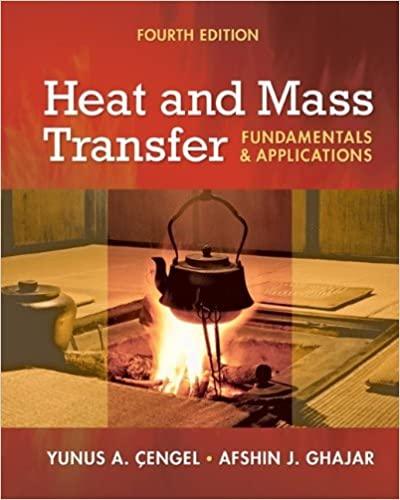Question
the first order irreversible gas phase reaction Normal Pentane Iso-pentane is to be carried out in a packed bed reactor. Currently 1,000 kg of reforming
the first order irreversible gas phase reaction Normal Pentane Iso-pentane is to be carried out in a packed bed reactor. Currently 1,000 kg of reforming catalyst are packed in a 4 cm diameter pipe. The catalyst particles are 0.5 cm in diameter and the bulk density of the packed catalyst is 1,000 kg/m3. Currently 14.1% conversion is realized. The entering pressure is 20 atm and the pressure at the exit of the reactor is 9.0 atmospheres. It is believes that this reaction is internal diffusion limited. For internal diffusion limitations, the rate of reaction varies inversely with the catalyst particle size. Consequently, one of the engineers suggests that the catalyst be ground up into a smaller size. She also notes that the smallest size to which the catalyst may be ground is 0.01 cm. and that there are 3 other pipe sizes available into which the catalyst could be packed. These non-corrosive heat-resistant pipes, which can be cut to any length, are 2 cm, 3 cm, and 6 cm in diameter. a. What conversion could be achieved in a CSTR with the same catalyst weight and no AP? (Ans X = 0.18) b. Calculate the maximum value of the pressure drop parameter, a, that you can have and still maintain an exit pressure of 1 atm. (Ans a = 9.975 * 10-4 kg-1) c. Should you change the catalyst size and pipe diameter in which 1,000 kg of the catalyst is packed while maintaini

ng the catalyst weight? d. Next consider how a would change if you changed both pipe size and particle size. Can you change pipe size and particle size at the same time such that a remains constant at the value calculated in part b? e. For the conditions of part a [i.e., maintain a constant at the value in part a), pick a pipe size and calculate a new particle size. Assume turbulent flow. f. Calculate a new specific reaction rate ratio assuming (i.e., recall the effectiveness factor from Chapter 12) that 1 then g. Using the new values of k and a, calculate the conversion for a PBR for the new particle size for an exit pressure of 1 atm.
Normal Pentane Iso-pentane is to be carried out in a packed bed reactor. Currently 1,000kg of reforming catalyst are packed in a 4cm diameter pipe. The catalyst particles are 0.5cm in diameter and the bulk density of the packed catalyst is 1,000kg/m3. Currently 14.1% conversion is realized. The entering pressure is 20 atm and the pressure at the exit of the reactor is 9.0 atmospheres. It is believes that this reaction is internal diffusion limited. For internal diffusion limitations, the rate of reaction varies inversely with the catalyst particle size. Consequently, one of the engineers suggests that the catalyst be ground up into a smaller size. She also notes that the smallest size to which the catalyst may be ground is 0.01cm. and that there are 3 other pipe sizes available into which the catalyst could be packed. These non-corrosive heat-resistant pipes, which can be cut to any length, are 2 cm,3cm, and 6cm in diameter. a. What conversion could be achieved in a CSTR with the same catalyst weight and no P ? (Ans X=0.18) b. Calculate the maximum value of the pressure drop parameter, that you can have and still maintain an exit pressure of 1 atm. (Ans =9.975104kg1 ) c. Should you change the catalyst size and pipe diameter in which 1,000kg of the catalyst is packed while maintaining the catalyst weight? d. Next consider how would change if you changed both pipe size and particle size. Can you change pipe size and particle size at the same time such that aremains constant at the value calculated in part b ? e. For the conditions of part a [i.e., maintain constant at the value in part a], pick a pipe size and calculate a new particle size. Assume turbulent flowStep by Step Solution
There are 3 Steps involved in it
Step: 1

Get Instant Access to Expert-Tailored Solutions
See step-by-step solutions with expert insights and AI powered tools for academic success
Step: 2

Step: 3

Ace Your Homework with AI
Get the answers you need in no time with our AI-driven, step-by-step assistance
Get Started


